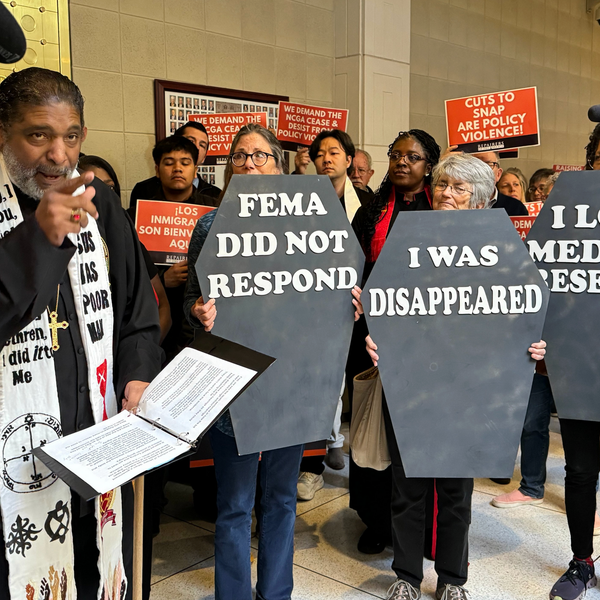Shourd was captured by the Iranian government in 2009, along with her now husband Shane Bauer and their friend Josh Fattal, when they accidentally crossed over the border during a long vacation hike. The three have just released a book called A Sliver of Light about their subsequent incarceration. Shourd spent less time in Evin prison than Bauer and Fattal, but she was held in solitary confinement for her entire stay. Her devastating account of how this isolation almost caused her to unravel will, no doubt, shock many American readers. They should be even more shocked, however, to know that there are tens of thousands of prisoners held in isolation in American prisons every day - and the conditions to which they're subjected are not much better than Shourd's in Iran.
Indeed, 'the hole' in the US is sometimes even worse than the worst public horror stories.
Scientific studies have shown that it can take less than two days in solitary confinement for brainwaves to shift towards delirium or stupor (pdf). For this reason, the United Nations has called on all countries to ban solitary confinement - except in exceptional circumstances, and even then to impose a limit of no longer than 15 days so that any permanent psychological damage can be averted. Shourd spent a total of 410 days in solitary and was diagnosed with post-traumatic stress disorder after her release. She still has trouble sleeping. But since returning home, she has spent much of her time trying to draw attention to the plight of more than 80,000 Americans who are held in isolation on any given day, some of whom do not count their stay in days or months, but in years and even decades.
Solitary confinement fell out of favor in American prisons for much of the last century, until a building boom of Supermax or control-unit prisons began in the early 1990's. You know, when being "tough on crime" was all the rage. It still is; being "smart on crime" still isn't. By 2005, 40 states were operating Supermax facilities, the physical design of which served to severely isolate prisoners both from the outside world and from their fellow inmates. Despite the extreme harshness of life in these prisons, where inmates are often held in tiny, windowless cells with limited or no access to the outdoors, the average stays far exceeds the UN's recommended 15-day maximum.
According to data compiled by Solitary Watch on some of the worst offending states, the average length of time prisoners spend in isolation units is shockingly high: 2.7 years in Virginia, more than four years in Texas, and more than five years in Arizona. In California, where prisoners have staged three consecutive hunger strikes over long-term isolation policies, the average stay is 6.8 years, but over 500 prisoners have been held for longer than a decade - and nearly 80 prisoners for more than two decades.
Shourd told me that after two months of next to no human contact in her solitary cell, her mind began to slip. One of the biggest problems with solitary confinement, she said, is that it's completely the opposite of the point of prison: giving inmates the chance to improve themselves.
You want to be productive, to use your time well, but you can't when your brain is being assaulted with mental deprivation. I would spend all day reading the same paragraph over and over again, unable to understand it - and end up throwing the book at the wall.
She had to go on hunger strike for five days before she was finally allowed to visit her fellow hostages, blindfolded in a padded interrogation room. Eventually, however, Shourd was allowed to have brief but daily contact visits with her two friends. This slightly more normal human interaction kept her from slipping into total, and possibly irretrievable, decline.
Many American prisoners in long-term isolation are never afforded such an opportunity to physically interact with fellow prisoners. They are rarely, if ever, allowed contact visits with loved ones. Shourd recently visited a prisoner in the Pelican Bay Secure Housing Unit (SHU) with whom she has been corresponding. The prisoner told her that, aside from being handcuffed by guards, he has not touched another human being for 27 years.
Some people are starting to question the wisdom - if you can call it that - of imposing this kind of extreme isolation on prisoners. Those who are in favor of such policies usually argue that segregation is the only way to deal with violent inmates and to keep the general population and prison staff safe from harm. But it's simply not true that all prisoners who end up in SHU were violent to begin with, nor is it true that the only way (or the most advisable way) to deal with prisoners who are violent is to cut them off indefinitely from any meaningful human contact.
Rick Raemisch, the Executive Director of the Colorado Department of Corrections, recently spent a night in solitary confinement - or Administrative Segregation (Ad Seg) - and wrote about the experience in the New York Times. Raemisch wanted to draw attention to the urgent need to reform the practice and to scale back its use, not just because it is harmful to prisoners but also because it does little to enhance public safety. Colorado prison officials learned this the hard way when Raemish's predecessor, Tom Clements, was murdered in his home by a former prisoner posing as a pizza delivery man. The prisoner had been recently released back into the community directly from a long stint in Ad Seg. "Whatever solitary confinement did to that former inmate and murderer," Raemish wrote, "it was not for the better."
So there are practical reasons to end the practice that Shourd describes as the "slow-motion torture of being buried alive". But there are more noble reasons, too. By all means we should get angry about the appalling treatment of American citizens in prisons in other countries, but we should spare some of our rage for the egregious abuses that occur in prisons on American soil. Until we start living up to our own high standards, we are in no position to point the finger at anyone else.


